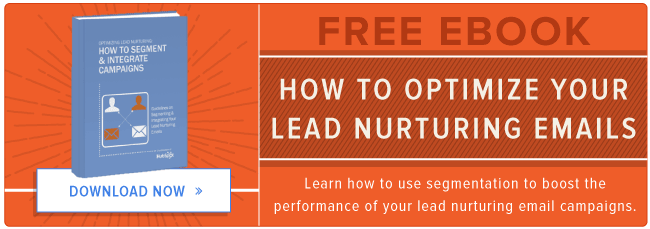
What is one of the most valuable aspects of a member-based, nonprofit organization? Do you have a guess?
It’s the member database.
I’ve been part of the nonprofit world for many years, and even now in my position at a digital agency, I help nonprofits build website and marketing campaigns. So, I know that the member and donor database is immensely important to an organization.
What I also know is that when it comes to mailing lists and email segmentation, there is plenty of room for improvement. How can we take that member data and really use it to its full potential? I’m here to offer a few suggestions.
Creating Member Personas
The idea of member personas comes from buyer personas in the business world. Buyer personas are fictional characters based on your actual customers and target markets. You create buyers personas by dividing your customers into groups based on different attributes (like age, occupation, demographics, personalities). This is useful information for creating targeted marketing campaigns.
Nonprofits can use this same process to create member and donor personas. You might be reading this and already thinking about the different kinds of members your organization has.
Most donors will be members, but not all members will be donors, so it is important to make that distinction here. The ideas listed below for member list segmentation can also be used for donors.
Elements of Good Email List Segmentation
Many nonprofits use one or two properties for basic list segmentation, such as: Member, Donor, Non-donor.
This is a good start and you’re probably already there. When a fundraising letter goes out, you might send it to the entire Member and Donor lists.
But how can we strategically target our communications for better results?
You should understand the following when you set up a list:
- Goal - your list should have a specific goal or campaign
- Persona - know the attributes of the people you are targeting
- Activity - narrow the list based on activity or inactivity
4 Example Email Lists for Members
Active Members
Goal: Provide members with tailored content to keep them engaged.
Activity Level:
- Active members (attending events frequently, active online)
- Semi-active members (occasional attendance or online contact)
Inactive Members
Goal: Provide contact and tailored content to reactivate uninvolved members.
Activity Level:
- Inactive members (have not attended event in X weeks/months)
- Past members (membership lapsed or about to lapse)
Members by Interest
Goal: Provide members with tailored content for special interests or age groups.
Persona based:
- Interests - Events, exhibits, classes
- Age groups - parents with young children, teens, millennials, retirees
Activity based:
- Past attendance - have they attended these types of events in the past?
Member to Donor Track
Goal: Convert members to donors and retain current donors.
Activity Level:
- Active to very active members
- Volunteers
Creating Your Targeted List
Let’s use one of the above examples to discuss setting the criteria and creating an email list. I will use “Active Members.”
Every database will be different, so I can’t tell you exactly how to create your list. I will assume your member database has basic fields for filtering, such as name and contact information, member type, last donation or membership paid date, etc.
In order to create a list like “Active Members,” you will also need fields for establishing your activity criteria: event attendance date, donation date, volunteer date, membership renewal date, etc. The next step is to set up your criteria for what counts as an active member (activity within the past 12 months, for example).
Your list criteria should include:
- First Name
- Last Name
- Mailing Address
- [Criteria for Activity Level]
Once your list is ready, you can begin developing the content for your targeted campaign, such as email marketing pieces and mailers.
Donors
You can do all of the above kind of segmenting with your donors, as well.
Additionally, think about ways to segment your donors by specific fundraising campaigns. Rather than sending a generic donor letter to a giant list, parse your giving campaigns into different lists.
For example, your organization wants to raise marketing funds for a new website or marketing software. Segment your list into those who might have particular interest in more technical ways of helping your organization or those who prefer anonymous donations. This might be more difficult to set up in a automated way, such as filtering by city or activity level, but would be worth the extra effort to think it through.
Conclusion
Keeping good track of your member data and setting up a usable database is so important. Equally important is how you harness that data and use it to get the best results for your organization.
Segmenting your members and donors into strategic email lists is a great way to personalize your communications. By keeping your emails specific to your target audience, you build trust and loyalty, and eliminate some aspects of donor fatigue. Your members will be more likely to read the email they receive from you because they know it will be relevant to their interests.
How is your nonprofit segmenting email lists now? Share your ideas in the comments below!
Nonprofit Marketing



.png)







